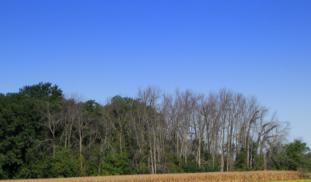Please wait...
About This Project
In just the last decade, this wood-boring insect has killed tens of millions of ash trees in North America and is a growing threat to European ash. The goal of this project is to discover genes from Asian ash trees which allow them to resist the insect in order to save the multi-billion dollar ash resources in North America and Europe.

Browse Other Projects on Experiment
Related Projects
How do polar bears stay healthy on the world's worst diet?
Polar bears survive almost entirely on seal fat. Yet unlike humans who eat high-fat diets, polar bears never...
Uncovering hidden insect diversity associated with a likely undescribed gall-forming midge
Does a likely undescribed species of gall-forming midge (pers. comm. Ray Gagné) on Eriodictyon plants (Yerba...
Macrofungi of the California archipelago
The eight islands of the California Archipelago are a well-studied biodiversity hotspot — but we know almost...




